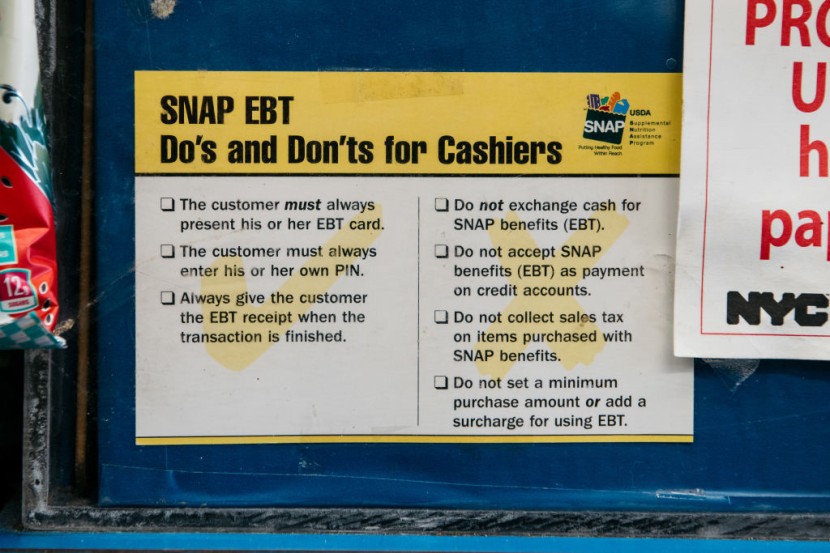
As they pledged emergency assistance would continue until at least February 2023, New York became the most recent state in the USA to extend emergency food stamps for low-income families through December 2022. Food stamps are part of the federal SNAP program, which helps low-income households.
However, state governments are in charge of SNAP, and New York is the fifth state to legally extend the emergency program beyond December, following Wisconsin, New Mexico, Oklahoma, and Oregon. Eight other states-Alabama, California, Hawaii, Kansas, Massachusetts, Minnesota, Vermont, and Nevada-have November payments carry over into December.
Income Eligibility Limits
Fruits and vegetables, meat, poultry, and fish, dairy goods, breads and cereals, snack foods, non-alcoholic drinks, and seeds and plants that generate food for the household to eat can all be purchased with SNAP benefits.
Because Congress is divided and the Republicans control the house, there are concerns that the outcome of the 2022 midterm elections might result in a reduction in the funding for programs like SNAP.
According to researchers like Karen Dolan, Director of the Institute for Policy Studies' Criminalization of Poverty Project, the GOP could try to limit accessibility by enforcing stricter job requirements.
The Farm Bill, which has authority over a wide range of components of food production, including crop insurance, agricultural sustainability rules, and the types of foods that are farmed, also regulates access to food for low-income households. Per Marca, it is up for renewal in 2023, so keep an eye on it to observe potential changes to SNAP.
The USDA has minimum requirements for two types of income: gross income and net income. Most families must fulfill the eligibility requirements for both in order to receive assistance.
The USDA defines gross income as "a household's entire, non-excluded revenue before any deductions have been made." Gross income less permitted deductions is referred to as net income.
Deductions include items like acceptable medical costs and child care costs.
It's vital to keep in mind that income for SNAP purposes includes both earned and unearned income, such as Supplemental Security Income (SSI) and veterans', disability, and death benefits.
Because they have previously been approved for entrance into a means-tested program, certain families who receive SSI or Temporary Assistance for Needy Families (TANF) payments may be immediately eligible for SNAP assistance.
Here are the SNAP qualifying income thresholds for households in the 48 contiguous states as of September 30. While net monthly income only covers 100% of poverty, gross monthly income covers 130% of it.
The threshold increases in proportion to how many members of the household are already receiving benefits.
| HOUSEHOLD | GROSS | NET |
| 1 | $1,396 | $1,074 |
| 2 | $1,888 | $1,452 |
| 3 | $2,379 | $1,830 |
| 4 | $2,871 | $2,209 |
| 5 | $3,363 | $2,587 |
| 6 | $3,855 | $2,965 |
| 7 | $4,347 | $3,344 |
| 8 | $4,839 | $3,722 |
| PER EXTRA PERSON | +$492 | +$379 |
In Hawaii, the annual income thresholds for families with one beneficiary range from $20,318 to $69,732. This amounts to around $1,690 to $5,811 every month. Each extra person costs $7,059 per year after that.
For one individual in Alaska, the yearly income cap is $22,087 ($1,841 per month), whereas for eight persons, it is $75,777 ($6,315 per month).
The USDA's net and gross income restrictions must be met by the majority of households, while there are a few uncommon exceptions.
Most candidates are permitted to have up to $2,500 in "countable resources" (assets like cash or money in the bank), as described by the USDA. However, the cap rises to $3,750 if a household member is incapacitated or at least 60 years old.
Additionally, families with aged, handicapped, or both members must pass just the net income test and not the minimum gross income requirement, as per GoBankingRates.
SNAP Benefits 2023
Every year on October 1st, the new Cost-of-Living Adjustments (COLA) take effect and are in force through the following year.
The US Department of Agriculture's Food and Nutrition Service raised the allotments for the 48 states, Washington, DC, Alaska, Hawaii, Guam, and the US Virgin Islands for Fiscal Year 2023. To account for inflation, caps and resource limitations were also increased.
According to the USDA website, the maximum SNAP allotments for a family of four have increased as follows:
- 48 states and DC: $939
- Alaska: $1,172 to $1,819
- Hawaii: $1,794
- Guam: $1,385
- US Virgin Islands: $1,208
The amount that SNAP users can subtract from their income to calculate their benefits-the shelter limit values-have also increased by $27, to a total of $624, across the 48 contiguous states and DC. In other areas, the maximum shelter deductions have grown in the following ways, according to AOL:
- Alaska: $996
- Hawaii: $840
- Guam: $732
- Virgin Islands: $492
@YouTube








